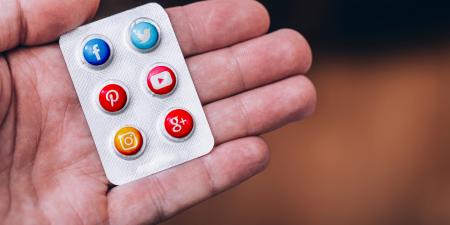Abstract
Performance-enhancing drugs (PEDs) have been used by athletes for as long as sporting competitions have existed. To protect the health and safety of athletes and promote fair play, banned substance lists were developed that include several classes of PEDs. Evidence shows that a majority of athletes use dietary supplement products to aid their training and support their health. Evidence also indicates that use of some dietary supplements carries a risk because the products may contain banned PEDs. Consumers and athletes should weigh a number of considerations before purchasing and consuming dietary supplements to protect their health, reputation, and the spirit of fair competition.
Why Performance-Enhancing Drug Use Matters
Performance-enhancing drugs (PEDs) have been used by athletes for decades, even centuries. To promote fair play—an issue precipitated by the death of an athlete—the International Olympic Committee (IOC) in 1967 banned the use of PEDs, established a new Medical Commission, and created a list of banned substances.1 Mandatory testing of all athletes began at the 1968 Olympic Games, and drug-testing programs were initiated all over the world in the following years to further promote fair play and to safeguard the health and safety of athletes.2
In 1999, the World Anti-Doping Agency (WADA) was formed to promote and coordinate the fight against doping in sport internationally. An IOC initiative, WADA was founded with the support and participation of intergovernmental organizations, governments, public authorities, and other public and private bodies fighting against doping in sports.3
How a Substance Is Banned
WADA is considered the international standard and one of the most respected organizations for identifying prohibited substances and methods. Each year, WADA updates its Prohibited List to provide a comprehensive list of banned substances.4 WADA considers 3 criteria when reviewing substances for inclusion on the Prohibited List, and any substance included on the list must fulfill at least 2 of the following criteria5:
- Substance has the potential to—or is proven to—enhance sport performance.
- Evidence exists of a potential or actual heath risk to an athlete.
- Use violates the spirit of sport as described in the World Anti-Doping Code.
Classes of substances on banned substance lists include anabolic-androgenic steroids, peptide hormones, growth factors, erythropoiesis stimulators, hormone modulators, stimulants, diuretics, masking agents, and more.2 Although WADA sets the international standard, each sport organization creates its own list based on the substances that put athletes at risk or might be used to provide an unfair advantage. Banned substance lists maintained by international, national, professional, amateur, and student sport organizations are now commonplace and updated yearly. The consequences of athletes being caught with a banned substance in their body include sanctions on eligibility for athletic participation, reputational damage, and stripping of prizes and medals, in addition to potential health risks or death.
Associations Between Dietary Supplements and Banned Substances
Data indicate that between 40% and 70% of athletes use dietary supplements and that between 10% and 15% of supplements may contain prohibited substances.6 While many dietary supplement manufacturing companies make every effort to produce quality products, it is well documented that unethical individuals and companies continue to engage in the manufacturing and distribution of intentionally adulterated or misbranded products labeled as dietary supplements.7,8,9,10,11 The most commonly adulterated dietary supplements are those marketed as weight loss, sexual enhancement, or sports supplements.9,10,12,13,14,15,16,17 From January 1, 2004 through December 19, 2012, 51% of class I drug recalls in the United States were for dietary supplements as opposed to pharmaceuticals,17 and copious reports detail the detection of contaminants in dietary supplements.2,18,19,20,21
Contamination of dietary supplements marketed to athletes is often due to pharmaceutical adulteration, which occurs when an active pharmaceutical is included in a product and not listed on the label.10 Pharmaceutical adulteration includes drugs formerly approved by the US Food and Drug Administration (FDA) and withdrawn, drugs used in other countries and never FDA-approved experimental drugs that were minimally or never tested in humans, veterinary drugs, and other novel compounds.22,23,24,25 Additionally, some compounds are intentionally designed and manufactured to avoid regulations and evade standard detection and identification; most of these compounds are added to dietary supplements without efficacy, safety, or toxicity assessments.26
A former chair of the National Collegiate Athletic Association drug-testing committee noted in an interview that most college students who report a positive drug test do so because of substances, including steroids, found in over-the-counter dietary supplements.27 However, when looking at shelves and aisles in stores and through pages of products on the internet, how can consumers and athletes learn which ones might contain banned substances or their markers?
Seven Considerations
With this background in mind, the following considerations should be weighed by all consumers and athletes before purchasing and consuming dietary supplements.
Most college students who report a positive drug test do so because of substances, including steroids, found in over-the-counter dietary supplements.
Be educated about applicable banned substance lists. All athletes should know if there is a banned substance list for their sporting organization and what substances are included on it, as many ingredients in dietary supplements appear on banned substance lists.2 Minimally, any athlete should have a trusted sports medical professional to consult when thinking about using a dietary supplement.
Be aware of strict liability and understand that athletes use any products at their own risk. Most sports organizations hold athletes to a policy of strict liability, meaning that athletes are solely responsible for the substances in their body, what they consume, and for any subsequent consequences if metabolites or markers of banned substances are found in a biofluid—regardless of whether they intentionally or inadvertently ingested a prohibited substance (eg, in a contaminated dietary supplement).28 Regardless of intent, athletes who take nutritional supplements risk damaging consequences.29 The provision of strict liability is a common feature of the drug-testing programs of many sports organizations.2
Understand that supplement regulations differ from food and drug regulations. Consumers, including athletes, often assume that dietary supplements are subject to the same (or similar) regulations as over-the-counter or prescription medications; this is not true. Dietary supplements are not reviewed premarket and are not held to the same evidentiary standards of safety or efficacy as medications to be sold to consumers. Medications go through a rigorous FDA approval process before entering the market; drugs are considered unsafe until proven otherwise. Dietary supplements do not undergo this approval process and are instead considered safe until contrary evidence is provided. However, through the Dietary Supplement Health and Education Act of 1994, the FDA regulates the processing, manufacturing, labeling, and packaging of dietary supplements.30 This act requires companies to ensure that their products are safe and that the label claims are truthful and not misleading before they are brought to market. The FDA is responsible for taking action against any adulterated or misbranded dietary supplement product only after it reaches the market and a violation is found.31,32
Always be skeptical—if a claim on a label sounds too good to be true, it probably is. Claims such as Helps you use oxygen more efficiently, Make 10 lbs of muscle in a week, Incinerate fat, and Get immediate results in energy, size, and strength are red flags. Although a claim might sound enticing to athletes looking for a competitive edge, extreme caution is warranted. Advertisement of awards won does not mean a product is safe; in fact, such advertising might suggest a product contains a banned substance.33,34
Read the ingredients list and know what each ingredient is. Consumers, especially athletes, should read the entire list of ingredients, understand what each ingredient is, and be aware of the amount of each ingredient contained in a serving. New ingredients continue to appear in products, yet few or no peer-reviewed publications assess compounds’ pharmacology, toxicology, and safety. Compounds could be banned substances or produce markers of banned substances.34,35 Some ingredients can cause serious adverse events or be deadly.36,37,38,39
Stimulants are a common contaminant in dietary supplements.11,40 The bodybuilding.com 2012 supplement of the year was found to contain a methamphetamine analog,34 and once including this particular drug in products fell out of favor, another dangerous and banned stimulant became popular.41 Instances of contamination with prescription diuretics have also been documented,42,43,44 and estrogenic compounds, anabolic agents—including anabolic‐androgenic steroids—are frequently encountered in products marketed to athletes.45,46,47,48,49,50,51 Adulterants are even found in dietary supplements for erectile dysfunction.19,52
Look for third-party confirmation of the ingredients list from a trusted source. Often, labels are intentionally confusing. Products have included false seals of approval noting “banned substance free” while at the same time listing a substance banned by most sport organizations among the ingredients. In light of such tactics, third-party certification of product ingredients from a reputable and trusted source may be helpful. With the large increase in dietary supplement manufacturers and the subsequent rise in dietary supplement safety concerns, several companies have started independent product certification services to provide an additional level of security and risk minimization for consumers and athletes.53,54,55,56,57
Unfortunately, it can often be a daunting challenge to collect and evaluate all the information required to develop a strong sense of confidence in a supplement brand and its products, which is a reason why third‐party certification is a desirable option for supplement companies. Third‐party certification programs are designed to help protect the rights and health of consumers and drug‐tested athletes by providing some assurance that certified products are free of the prohibited substances for which they are tested. No certification program can assure that a product is entirely free of prohibited substances because it is not possible to test for all prohibited substances. However, supplement companies that commit to third‐party certification have done everything feasible to assure consumers that their certified products present minimal risk of inadvertent doping. In addition to product certification, consumers can also usually place trust in well-established companies with no previous issues with product contamination, a good record with the FDA, and a commitment to scientific integrity regarding claim substantiation.
Additionally, understand what certification entails, as not all certifications are of equal quality or content. Many companies test products to verify they contain the labeled dose(s) of the active ingredient(s), while some companies test to confirm that products do not contain microbes, heavy metals, or other toxins, and others test for a comprehensive list of substances that are banned by athletic organizations.53,54,55,56,57
Protect your health and reputation. Be sure to check with your physician or sports health professional before consuming or incorporating any dietary supplement into your routine. Do not take any supplement purchased from a store, online, or given to you by a friend or relative without first discussing it with a medical professional who has your best interests in mind.
References
-
Mottram DR. Banned drugs in sport. Does the International Olympic Committee (IOC) list need updating? Sports Med. 1999;27(1):1-10.
- Cadwallader AB, Murray B. Performance-enhancing drugs I: understanding the basics of testing for banned substances. Int J Sport Nutr Exerc Metab. 2015;25(4):396-404.
-
Who we are. World Anti-Doping Agency. Accessed June 20, 2021. https://www.wada-ama.org/en/who-we-are
-
World Anti-Doping Agency. World Anti-Doping code international standard prohibited list. Effective January 1, 2022. Accessed January 25, 2022. https://www.wada-ama.org/sites/default/files/resources/files/2022list_final_en.pdf
-
Frequently asked questions: how does a substance or method make it to the prohibited list? World Anti-Doping Agency. Accessed March 10, 2022. https://www.wada-ama.org/en/prohibited-list#faq-anchor
- Outram S, Stewart B. Doping through supplement use: a review of the available empirical data. Int J Sport Nutr Exerc Metab. 2015;25(1):54-59.
- Cohen PA, Avula B, Khan IA. Variability in strength of red yeast rice supplements purchased from mainstream retailers. Eur J Prev Cardiol. 2017;24(13):1431-1434.
- Lewis ZT, Shani G, Masarweh CF, et al. Validating bifidobacterial species and subspecies identity in commercial probiotic products. Pediatr Res. 2016;79(3):445-452.
- Geller AI, Shehab N, Weidle NJ, et al. Emergency department visits for adverse events related to dietary supplements. N Engl J Med. 2015;373(16):1531-1540.
-
Cohen PA. The FDA and adulterated supplements—dereliction of duty. JAMA Netw Open. 2018;1(6):e183329.
- Cohen PA, Travis JC, Vanhee C, Ohana D, Venhuis BJ. Nine prohibited stimulants found in sports and weight loss supplements: deterenol, phenpromethamine (Vonedrine), oxilofrine, octodrine, beta-methylphenylethylamine (BMPEA), 1,3-dimethylamylamine (1,3-DMAA), 1,4-dimethylamylamine (1,4-DMAA), 1,3-dimethylbutylamine (1,3-DMBA) and higenamine. Clin Toxicol (Phila). 2021;59(11):975-981.
- Magee CD, Witte S, Kwok RM, Deuster PA. Mission compromised? Drug-induced liver injury from prohormone supplements containing anabolic-androgenic steroids in two deployed US service members. Mil Med. 2016;181(9):e1169-e1171.
- Cohen PA, Wang YH, Maller G, DeSouza R, Khan IA. Pharmaceutical quantities of yohimbine found in dietary supplements in the USA. Drug Test Anal. 2016;8(3-4):357-369.
- Cohen PA, Travis JC, Keizers PHJ, Boyer FE, Venhuis BJ. The stimulant higenamine in weight loss and sports supplements. Clin Toxicol (Phila). 2019;57(2):125-130.
-
Marcus DM. Dietary supplements: what’s in a name? What’s in the bottle? Drug Test Anal. 2016;8(3-4):410-412.
- Or F, Kim Y, Simms J, Austin SB. Taking stock of dietary supplements’ harmful effects on children, adolescents, and young adults. J Adolesc Health. 2019;65(4):455-461.
- Harel Z, Harel S, Wald R, Mamdani M, Bell CM. The frequency and characteristics of dietary supplement recalls in the United States. JAMA Intern Med. 2013;173(10):926-928.
-
Judkins C, Prock P. Supplements and inadvertent doping—how big is the risk to athletes. Med Sport Sci. 2012;59:143-152.
- Lam YH, Poon WT, Lai CK, Chan AY, Mak TW. Identification of a novel vardenafil analogue in herbal product. J Pharm Biomed Anal. 2008;46(4):804-807.
-
Van der Bijl P. Dietary supplements containing prohibited substances: a review (part 1). S Afr J Sports Med. 2014;26(2):2014.
-
Van der Bijl P. Dietary supplements containing prohibited substances: a review (part 2). S Afr J Sports Med. 2014;26(3):2014.
- Cohen PA, Travis JC, Keizers PHJ, Deuster P, Venhuis BJ. Four experimental stimulants found in sports and weight loss supplements: 2-amino-6-methylheptane (octodrine), 1,4-dimethylamylamine (1,4-DMAA), 1,3-dimethylamylamine (1,3-DMAA) and 1,3-dimethylbutylamine (1,3-DMBA). Clin Toxicol (Phila). 2018;56(6):421-426.
- Cohen PA, Wen A, Gerona R. Prohibited stimulants in dietary supplements after enforcement action by the US Food and Drug Administration. JAMA Intern Med. 2018;178(12):1721-1723.
- Abbate V, Kicman AT, Evans-Brown M, et al. Anabolic steroids detected in bodybuilding dietary supplements—a significant risk to public health. Drug Test Anal. 2015;7(7):609-618.
- Mazzeo F, Tafuri D, Vascilescu M, Ionescu Anca M. Pharmacologically active substances and dietary supplements used by athletes—the European and Italian regulation. J Romanian Sports Med Soc. 2014;10(2):2309-2314.
- Molinero O, Márquez S. Use of nutritional supplements in sports: risks, knowledge, and behavioural-related factors. Nutr Hosp. 2009;24(2):128-134.
- Green G. An interview with Dr Gary Green about supplements and doping problems from an NCAA perspective. Interview by Louise Burke. Int J Sport Nutr Exerc Metab. 2001;11(3):397-400.
-
World Anti-Doping Agency. World Anti-Doping code. 2021. Accessed March 10, 2022. https://www.wada-ama.org/sites/default/files/resources/files/2021_wada_code.pdf
- van der Merwe PJ, Grobbelaar E. Unintentional doping through the use of contaminated nutritional supplements. S Afr Med J. 2005;95(7):510-511.
-
Current Good Manufacturing Practice in Manufacturing, Packaging, Labeling, or Holding Operations for Dietary Supplements. 21 CFR §111 (2022).
-
Dietary supplements. US Food and Drug Administration. February 18, 2022. Accessed March 10, 2022. https://www.fda.gov/food/dietary-supplements
-
Label claims for conventional foods and dietary supplements. US Food and Drug Administration. March 7, 2022. Accessed March 10, 2022. https://www.fda.gov/food/food-labeling-nutrition/label-claims-conventional-foods-and-dietary-supplements
-
Driven Sports’ Craze® wins Bodybuilding.com’s New Supplement of the Year Award! PRWeb. October 6, 2012. Accessed June 20, 2020. https://www.prweb.com/releases/2012/10/prweb9985788.htm
- Cohen PA, Travis JC, Venhuis BJ. A methamphetamine analog (N,alpha-diethyl-phenylethylamine) identified in a mainstream dietary supplement. Drug Test Anal. 2014;6(7-8):805-807.
- Reilly CA, Crouch DJ. Analysis of the nutritional supplement 1AD, its metabolites, and related endogenous hormones in biological matrices using liquid chromatography-tandem mass spectrometry. J Anal Toxicol. 2004;28(1):1-10.
-
Claire Squires inquest: DMAA was factor in marathon runner’s death. BBC News. January 30, 2013. Accessed June 20, 2021. https://www.bbc.com/news/uk-england-london-21262717
- Salinger L, Daniels B, Sangalli B, Bayer M. Recreational use of a body-building supplement resulting in severe cardiotoxicity. Clin Toxicol. 2011;49(6):573-574.
- Venhuis B, Keizers P, van Riel A, de Kaste D. A cocktail of synthetic stimulants found in a dietary supplement associated with serious adverse events. Drug Test Anal. 2014;6(6):578-581.
- Foley S, Butlin E, Shields W, Lacey B. Experience with OxyELITE Pro and acute liver injury in active duty service members. Dig Dis Sci. 2014;59(12):3117-3121.
- Monakhova YB, Ilse M, Hengen J, et al. Rapid assessment of the illegal presence of 1,3-dimethylamylamine (DMAA) in sports nutrition and dietary supplements using 1H NMR spectroscopy. Drug Test Anal. 2014;6(9):944-948.
- Cohen PA, Travis JC, Venhuis BJ. A synthetic stimulant never tested in humans, 1,3-dimethylbutylamine (DMBA), is identified in multiple dietary supplements. Drug Test Anal. 2015;7(1):83-87.
- Hoggan AM, Shelby MK, Crouch DJ, Borges CR, Slawson MH. Detection of bumetanide in an over-the-counter dietary supplement. J Anal Toxicol. 2007;31(9):601-604.
- Cadwallader AB, Shelby MK, Stapleton EM, McCord L, Black DL. Dietary supplement tests positive for prescription diuretic. ToxTalk. 2013;37(4):8-10.
- Cadwallader AB, de la Torre X, Tieri A, Botrè F. The abuse of diuretics as performance-enhancing drugs and masking agents in sport doping: pharmacology, toxicology and analysis. Br J Pharmacol. 2010;161(1):1-16.
- Geyer H, Parr MK, Koehler K, Mareck U, Schänzer W, Thevis M. Nutritional supplements cross-contaminated and faked with doping substances. J Mass Spectrom. 2008;43(7):892-902.
- Cho SH, Park HJ, Lee JH, et al. Monitoring of 35 illegally added steroid compounds in foods and dietary supplements. Food Addit Contam Part A Chem Anal Control Expo Risk Assess. 2014;31(9):1470-1475.
-
Geyer H, Bredehoft M, Mareck U, Parr MK, Reinhart U, Schanzer W. Oxandrolone and high doses of metandienone found in nutritional supplements. Recent Adv Doping Anal. 2003;11:77-84.
- Geyer H, Parr MK, Mareck U, Reinhart U, Schrader Y, Schänzer W. Analysis of non-hormonal nutritional supplements for anabolic-androgenic steroids—results of an international study. Int J Sports Med. 2004;25(2):124-129.
- Parr MK, Geyer H, Hoffmann B, Köhler K, Mareck U, Schänzer W. High amounts of 17-methylated anabolic-androgenic steroids in effervescent tablets on the dietary supplement market. Biomed Chromatogr. 2007;21(2):164-168.
- Parr MK, Gütschow M, Daniels J, Opfermann G, Thevis M, Schänzer W. Identification of steroid isoxazole isomers marketed as designer supplement. Steroids. 2009;74(3):322-328.
- Rahnema CD, Crosnoe LE, Kim ED. Designer steroids—over-the-counter supplements and their androgenic component: review of an increasing problem. Andrology. 2015;3(2):150-155.
- Tagami T, Aoyama A, Takeda A, et al. Simultaneous identification of 18 illegal adulterants in dietary supplements by using high-performance liquid chromatography-mass spectrometry. Shokuhin Eiseigaku Zasshi. 2014;55(1):34-40.
- Manson JE, Bassuk SS. Vitamin and mineral supplements: what clinicians need to know. JAMA. 2018;319(9):859-860.
-
ConsumerLab.com®. Accessed March 5, 2020. https://www.consumerlab.com/
-
USP verified dietary supplements. USP (United States Pharmacopeia). Accessed March 5, 2020. https://www.quality-supplements.org/verified-products?fireglass_rsn=true#fireglass_params&tabid=ac62888d17482230&application_server_address=isolation1-us-east-1.wss.prod.fire.glass&popup=true&is_right_side_popup=false&start_with_session_counter=1
-
Certified products search. NSF International Certified for Sport®. Accessed March 5, 2020. https://www.nsfsport.com/certified-products/?fireglass_rsn=true#fireglass_params&tabid=a8eedd9075ff3414&application_server_address=isolation1-us-east-1.wss.prod.fire.glass&popup=true&is_right_side_popup=false&start_with_session_counter=1
-
Dietary supplement testing and compliance services. UL. Accessed March 5, 2020. https://crs.ul.com/en/industries/dietary-supplements/



